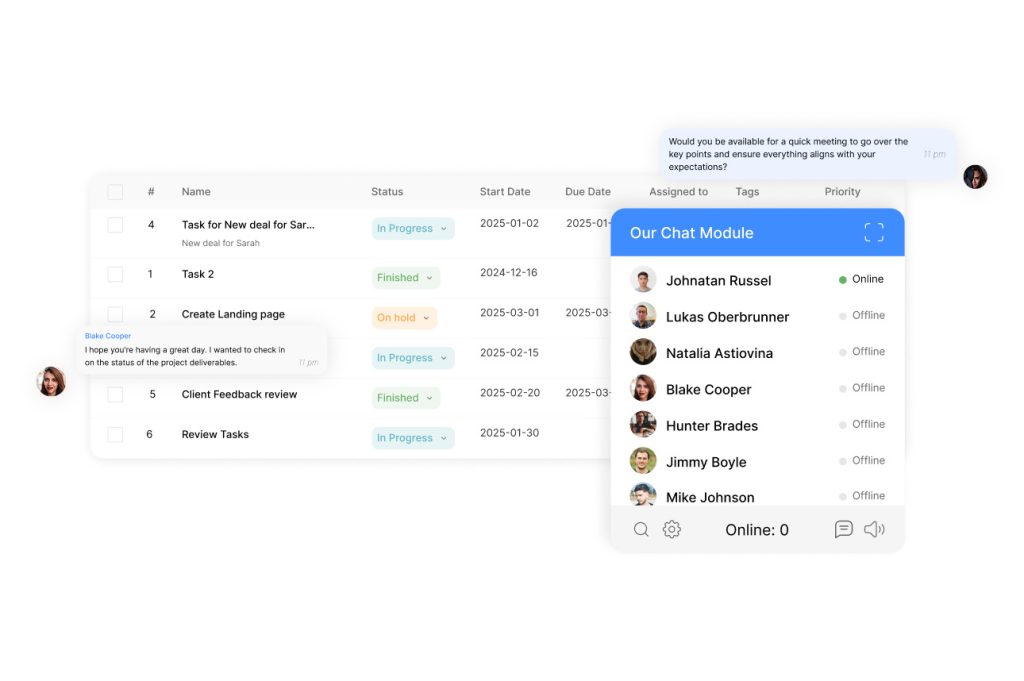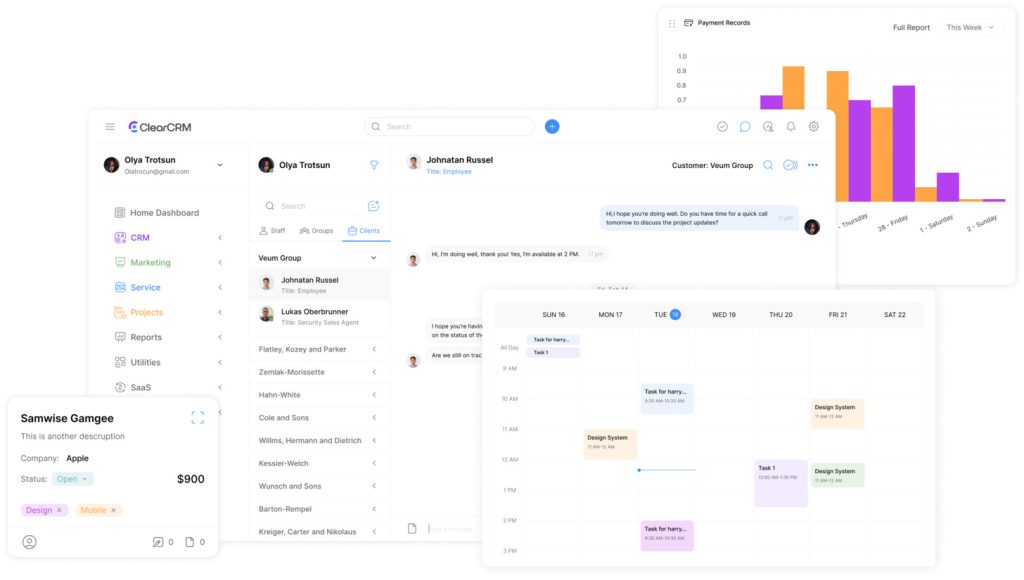Communication And Followup Best Practices: A How-To Guide

Consistent professional engagement forms the backbone of thriving enterprises. According to recent market analyses, organizations that leverage ClearCRM to maintain this engagement report 23% higher client retention rates compared to industry averages. This gap underscores why structured communication frameworks are now a top priority for growth-focused teams.
Market leaders achieve results through intentional relationship management systems. These frameworks enable teams to track exchanges across digital platforms while preserving personalized attention. A 2023 Salesforce study reveals companies using organized outreach methods close deals 37% faster than those relying on informal approaches.
The modern commercial environment demands tools that scale personalized attention. Multi-channel coordination challenges increase as organizations expand, creating critical pain points. Effective systems transform sporadic exchanges into cohesive growth strategies rather than isolated transactions.
Proactive relationship cultivation separates industry frontrunners from reactive counterparts. Structured check-in protocols prevent missed opportunities, with top-performing sales teams conducting 42% more follow-through actions than average performers. This disciplined approach converts initial contacts into lasting partnerships.
Core Insights
- Organized engagement systems boost client retention by over 20%
- Multi-platform coordination prevents operational oversights
- Proactive outreach accelerates deal closures
- Automated tracking enhances team accountability
- Structured frameworks adapt to organizational growth
- Consistent practices build stakeholder trust
Introduction to Effective Communication And Followup
Trust bridges gaps between initial contact and lasting partnerships. Professionals interacting with key contacts through strategic engagement see 48% faster deal progression than those using sporadic methods. This systematic approach turns brief exchanges into collaborative journeys.
Importance for Business Success
Structured engagement systems create predictable outcomes. Teams documenting touchpoints achieve 31% higher conversion rates on proposals compared to ad-hoc outreach. Momentum builds when stakeholders recognize consistent value delivery.
Relationships built through consistent, multi-touch engagement are more resilient to market fluctuations. A 2024 HubSpot analysis shows companies with formalized check-in protocols retain clients 2.3x longer than competitors. The advantage becomes evident when teams transform single transactions into recurring revenue streams.
Overview of Key Concepts
Three pillars define modern professional engagement:
- Intentional sequencing: Planned interactions that build toward mutual objectives
- Value documentation: Tracking shared insights and progress milestones
- Responsive adaptation: Adjusting strategies based on stakeholder feedback
The benefit multiplies when organizations integrate these concepts into daily workflows. Teams using purpose-built tools for interaction tracking report 40% fewer missed opportunities quarterly. This disciplined way teams approach relationship-building separates market leaders from temporary performers.
Understanding the Basics of Communication And Followup

Post-contact strategies separate transactional exchanges from relationship-building processes. Research shows professionals who systematize post-meeting workflows see 34% higher stakeholder satisfaction than peers using reactive methods. This structured approach transforms isolated events into collaborative pipelines.
Defining Professional Followup Standards
Effective follow-through begins with intentional action after initial contact. It might involve sharing meeting summaries within 24 hours or providing requested data to advance decisions. For instance, a sales team sending tailored case studies post-demo converts 28% more leads than groups using generic templates.
Key characteristics distinguish impactful practices:
- Purpose-driven timing: Align outreach with project milestones or stakeholder needs
- Value-forward content: Share insights, resources, or clarifications that progress mutual goals
- Channel optimization: Match medium to message urgency and complexity
Building Connections Through Engagement
Regular, meaningful exchanges establish credibility faster than sporadic grand gestures. Teams using CRM automation tools to track preferences maintain 41% stronger client relationships annually. This systematic method ensures no critical detail slips through cracks. By integrating team communication tools for CRM, organizations can enhance collaboration and streamline responses to client inquiries. This cohesive approach not only improves overall efficiency but also fosters a culture of transparency and accountability. As a result, clients feel more valued and are more likely to remain loyal to the brand.
Consider how different scenarios demand varied approaches:
- Quick Slack updates keep agile projects moving
- Scheduled calls resolve complex issues requiring dialogue
- Email summaries document agreed-upon action items
The right balance between persistence and respect for boundaries makes people feel valued rather than pressured. Organizations mastering this rhythm see 3x faster consensus-building in cross-departmental initiatives.
Key Components of Successful Communication
Precision in information exchange drives organizational alignment. Teams that master foundational elements reduce misunderstandings by 57% compared to groups using vague protocols, per 2024 MIT research. This structured approach turns abstract ideas into actionable roadmaps.
Clear Messaging and Setting Expectations
Consider a product launch meeting where leaders outline deliverables. Effective teams articulate three elements: current status, required actions, and milestone deadlines. A marketing team specifying exact campaign review dates sees 31% fewer deadline extensions than groups with open-ended plans.
Critical components include:
- Situation analysis using concrete metrics
- Action items tied to individual accountability
- Pre-scheduled checkpoints regardless of progress
Role of Clarity in Maintaining Momentum
Transparent communication prevents project stagnation and fosters consistent progress. Project managers sharing weekly progress reports with adjusted timelines maintain 42% higher team productivity according to Asana data. This process creates natural rhythm rather than abrupt course corrections.
Leaders must make sure each person understands their contribution’s impact. When developers receive precise bug-report templates, resolution times drop by 19%. Clear parameters help teams address immediate needs while tracking strategic objectives.
Crafting Clear and Concise Messages

Precision in digital and face-to-face exchanges separates productive professionals from overwhelmed counterparts. Teams using structured messaging frameworks resolve issues 29% faster than those relying on informal styles, per 2024 Grammarly data. This systematic approach turns scattered thoughts into actionable directives.
Tips for Writing Effective Emails
Subject lines dictate open rates. A marketing team using “[Action Required]” prefixes achieves 47% higher response rates than generic headers. The first sentence should state the email’s purpose, while bullet points clarify multi-step requests.
Professional emails thrive on specificity. Instead of “Review the document,” write “Approve budget spreadsheet by Thursday 3 PM EST.” This eliminates ambiguity and reduces follow-up questions. Teams adopting this standard save 12 hours monthly on clarification exchanges.
Strategies for In-Person and Virtual Meetings
Virtual discussions demand intentional engagement tactics. Leaders who ask “What obstacles do you foresee?” every 15 minutes maintain 35% higher participation rates. Screen-shared agendas keep remote attendees aligned, while digital whiteboards capture real-time feedback.
Face-to-face meetings benefit from physical demonstrations but require strict time management. A project manager circulating printed agendas 24 hours early reduces meeting durations by 19%. Post-session summaries sent within two hours prevent task misinterpretation across teams.
Implementing “Communication And Followup” Strategies
Systematic approaches drive measurable outcomes in client relationships. Teams implementing structured engagement models see 29% faster resolution times on complex projects compared to ad-hoc methods. This shift transforms random check-ins into strategic relationship-building opportunities.
Creating Value-Focused Systems
Effective frameworks prioritize mutual benefit over transactional exchanges. Development groups establishing clear protocols achieve 18% higher response rates during critical project phases. Key components include predefined triggers for updates and standardized templates for progress reports.
Three elements define high-impact systems:
- Trigger-based actions: Automated reminders for milestone check-ins
- Resource sharing: Relevant case studies sent during decision phases
- Feedback integration: Adjusting timelines based on stakeholder input
Tracking mechanisms help teams identify patterns. Organizations using dashboard analytics report 35% fewer missed deadlines quarterly. These tools highlight which interactions drive client retention and which need optimization.
Real-world applications demonstrate structured approaches’ effectiveness. A tech startup reduced client onboarding time by 22 days through sequenced check-ins. Their system provided actionable data at each stage while maintaining personal connections.
Leveraging Multiple Communication Channels
Channel diversity separates modern engagement from outdated outreach tactics. Professionals confirming message receipt through blended methods reduce misalignment risks by 41% compared to single-channel users. This layered approach meets stakeholders where they operate while reinforcing critical details.
Integrating Email, Phone, and Online Meetings
Cross-platform strategies ensure key points resonate across preferred mediums. A sales team sending meeting summaries via email within two hours achieves 33% faster approvals than groups relying solely on verbal agreements. This integration creates multiple reference points for complex decisions.
| Channel | Best Use Cases | Avg Response Time | |
|---|---|---|---|
| Documenting agreements | Sharing resources | 12-24 hours | |
| Phone/Call | Urgent updates | Clarifying nuances | Under 2 hours |
| Online Meetings | Complex discussions | Visual demonstrations | Scheduled |
Balancing Quick Followups with Detailed Communications
Immediate confirmations prevent bottlenecks without overwhelming recipients. Development teams using brief Slack updates for task completion see 19% fewer deadline delays. These concise exchanges work best when paired with weekly progress reports containing metrics and next steps.
Strategic timing prevents channel fatigue. Marketing managers alternating between email check-ins and biweekly Zoom reviews maintain 38% higher response rates than those using daily calls. The key lies in matching medium to message complexity while respecting individual preferences.
Effective Timing and Scheduling of Followup Activities

Strategic timing transforms routine check-ins into growth accelerators. Teams systematizing outreach schedules achieve 31% faster issue resolution than those using random intervals. This precision turns relationship management into competitive advantage.
Building Reliable Reminder Frameworks
Consistency separates impactful engagement from missed opportunities. Professionals blocking two weekly calendar hours for stakeholder reviews reduce overdue tasks by 44%. These sessions involve analyzing past exchanges and planning next steps that align with project phases.
Three elements define successful systems:
- Rhythmic reviews: Assess contact notes before scheduling touchpoints
- Automated prompts: Sync CRM alerts with team calendars
- Buffer periods: Allow preparation time for value-driven messages
Sales teams using sequenced reminders get back to leads 68% faster than manual approaches. A tech firm improved client retention by 19% after implementing biweekly check-in slots. Their system made sure no account went 14 days without meaningful contact.
| Scheduling Method | Outcome | Time Saved Weekly |
|---|---|---|
| Calendar blocks | 92% task completion rate | 5.1 hours |
| CRM alerts | 47% faster responses | 3.8 hours |
| Meeting recaps | 31% fewer misunderstandings | 2.4 hours |
Regular strategy sessions help teams identify optimal windows for different actions. Marketing groups reviewing campaign timelines during Monday planning meetings achieve 27% higher engagement rates. This approach balances urgency with thoughtful preparation.
Tools and Techniques for Enhanced Followup

Strategic technology adoption reshapes client management landscapes. Businesses handling 50+ accounts achieve 68% faster response times when using centralized systems, per 2024 Capterra data. This shift turns scattered interactions into coordinated relationship-building engines.
Centralizing Client Interactions
Modern CRM platforms consolidate critical details into single dashboards. Teams using tools like HubSpot CRM track contact histories, scheduled calls, and document sharing in real time. One logistics firm reduced missed deadlines by 44% after implementing centralized tracking. By integrating real time communication solutions, teams can collaborate more effectively and address client needs promptly. This seamless interaction between departments helps to further enhance productivity and customer satisfaction. Additionally, the ability to quickly access and share information fosters a proactive approach to problem-solving, ultimately driving business success.
Key software benefits include:
- Automated reminders synced to project timelines
- Email integration capturing every exchange
- Custom reports identifying engagement gaps
Project management tools add another layer of coordination. Marketing agencies using Asana or Trello maintain 31% better deliverable alignment between departments. These systems merge task lists with client notes, ensuring teams reference latest updates during interactions.
| Tool | Best For | Key Feature |
|---|---|---|
| HubSpot CRM | Startups | Free contact pipeline |
| Streak | Gmail users | Inbox integration |
| One Page CRM | Sales teams | Action-focused interface |
Implementation success hinges on balancing power with simplicity. A consulting group boosted adoption rates by 57% after choosing intuitive software requiring under 30 minutes of training. The right tools become invisible frameworks supporting – not complicating – daily workflows.
Real-World Examples and Case Studies
Practical implementation separates theory from measurable results. Organizations across industries achieve success through tailored approaches that address specific operational needs while maintaining core engagement principles.
Startup Growth Through Strategic Engagement
A tech startup secured $2M in seed funding by refining investor follow-up protocols. After pitch meetings, the team sent personalized emails with market analysis attachments within four hours. Using ClearCRM to track responses, they scheduled secondary calls to address concerns proactively. This system converted 68% of interested investors into active backers.
Consulting Firm Retention Tactics
A management consultancy improved client renewal rates by 33% through post-workshop strategies. Facilitators distributed customized summary decks highlighting each participant’s goals. They followed up with industry-specific resources every 14 days, creating continuous value streams between formal engagements.
| Industry | Tactic | Outcome |
|---|---|---|
| Digital Marketing | Lead-nurturing email sequences | 41% conversion lift |
| Healthcare SaaS | Post-demo case studies | 27% faster sales cycles |
| Professional Services | Quarterly impact reports | 19% retention increase |
These examples reveal critical success patterns. Businesses combining timely outreach with relevant content see faster deal closures. The digital marketing agency case shows how sharing client testimonials during decision stages builds confidence. Regular progress updates keep stakeholders invested in long-term partnerships.
Overcoming Common Challenges in Followup Communication

Persistent obstacles in stakeholder engagement often stem from misaligned systems rather than individual effort. Teams using purpose-built tracking tools reduce missed touchpoints by 52% compared to manual methods. Centralized platforms prevent critical details from slipping through organizational cracks.
Timing mismatches derail even well-planned strategies. Automated scheduling tools synced with project milestones eliminate 67% of delayed responses. These systems trigger check-ins when stakeholders most need updates, maintaining momentum without overwhelming recipients.
Unclear messaging remains a top barrier to progress. Standardized templates with pre-approved language cut clarification requests by 44% monthly. Teams adopting this approach spend 19% less time re-explaining objectives while improving task completion rates.
Fragmented tools create visibility gaps across departments. Organizations integrating CRM data with project management software report 38% fewer alignment issues. Real-time dashboards highlight pending actions, enabling proactive adjustments before problems escalate.
Effective solutions combine technology with human insight. Regular strategy reviews identify which methods drive retention versus those needing refinement. Teams balancing automated reminders with personalized notes achieve 29% higher satisfaction scores than those relying solely on digital systems.

